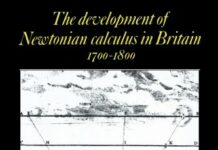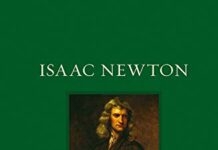
Ebook Info
- Published: 2003
- Number of pages: 292 pages
- Format: PDF
- File Size: 1.21 MB
- Authors: Niccolò Guicciardini
Description
Isaac Newton’s Principia is considered one of the masterpieces in the history of science. The mathematical methods employed by Newton in the Principia stimulated much debate among his contemporaries, especially Leibniz, Huygens, Bernoulli and Euler, who debated their merits and drawbacks. Among the questions they asked were: How should natural philosophy be mathematized?; Is it legitimate to use uninterpreted symbols?; Is it possible to depart from the established Archimedean or Galilean/Huygenian tradition of geometrizing nature?; What is the value of elegance and conciseness?; What is the relation between Newton’s geometrical methods and the calculus? This book explains how Newton addressed these issues, taking into consideration the values that directed the research of Newton and his contemporaries. This book will be of interest to researchers and advanced students in departments of history of science, philosophy of science, physics, mathematics and astronomy.
User’s Reviews
Reviews from Amazon users which were colected at the time this book was published on the website:
⭐My review is restricted to challenging one of Guicciardini’s theses, namely that “foundational worries about the nature of infinitesimal quantities” motivated Newton, “this champion of series, infinitesimals and algebra,” “to distance himself from his early researches” and reshape his calculus in terms of geometry and limits (p. 30). Guicciardini calls this “one of the most spectacular processes in the history of mathematics, comparable to Einstein’s refusal of quantum mechanics” (pp. 6-7).Guicciardini presents almost no evidence for his extravagant claim that Newton “refused” his early calculus on foundational grounds. Basically, the evidence is restricted to one or two quotations that could be seen as prima facie support for the thesis in question.The first occasion where Newton rephrased his calculus in terms of “first and ultimate ratios” was in his Geometria curvilinea of circa 1680. Since Guicciardini wants to claim that foundational concerns was one of the driving forces behind this new approach to the calculus, he writes:”It should be observed that the Geometria curvilinea is opened by a long declaration about the lack of rigour and elegance of the methods followed by those ‘men of recent times’ who have abandoned the geometrical methods of the Ancients.” (pp. 34-35, supported by a reference to Mathematical Papers, vol. 4, pp. 420-425.)This, however, is a blatant lie. If you follow the reference and read Newton’s actual words, you will find that this preface is concerned entirely with elegance and does not contain a single word about rigour. We do indeed find the following statement:”Those who have taken the measure of curvilinear figures have usually views them as made up of infinitely many infinitely-small parts. I, in fact, shall consider them as generated by growing, arguing that they are greater, equal or less according as they grow more swiftly, equally swiftly or more slowly from their beginning.” (quoted by Guicciardini on p. 33)But there is no indication whatever that Newton takes this to be an issue of rigour. On the contrary, Newton immediately emphasises very clearly and explicitly that this is an explanation of the superior elegance of this method: “this is the natural source for measuring quantities generated by continuous flow … both on account of the clarity and brevity of the reasoning involved and because of the simplicity of the conclusions and the illustrations required.”The only other substantial piece of evidence that Guicciardini puts forward as support for his thesis is the following quotation from Newton’s account of the Commercium epistolicum.”We have no ideas of infinitely little quantities & therefore Mr Newton introduced fluxions into his method that it might proceed by finite quantities as much as possible. It is more natural and geometrical because founded upon the primae quantitatum nascentium rationes wch have a being in Geometry, whilst indivisibles upon which [Leibniz’s] Differential method is founded have no being either in Geometry or in nature. … Nature generates quantities by continual flux or increase, & the ancient Geometers admitted such a generation of areas & solids … But the summing up of indivisibles to compose an area or solid was never yet admitted into Geometry.” (p. 35)This is extremely feeble evidence for Guicciardini’s thesis for several reasons: (1) it was written long after the fact, in 1715; (2) it was written in the context of the priority dispute, in which context Newton is know to have lied repeatedly; (3) again the emphasis is that Newton’s method is “more natural,” not that it is more rigorous; (4) it makes little sense to take this to be a condemnation of Leibnizean calculus as regards foundations, for the foundations of Newton’s calculus and that of Leibniz are essentially identical (cf. pp. 159-161): for example, while it may seem that the last sentence in the quotation above is directed against Leibniz’s conception of the integral as a sum of rectangles of area ydx, Newton’s Riemann-style definition of integrals (p. 45) is at least as well adapted to providing a foundation for this approach as for Newton’s own methods, and the same goes for Newton’s foundations for differentiation, both geometric (p. 34) and algebraic (p. 36); (5) it makes little sense to take this to express a difference between Newton’s early and late styles, for Newton himself writes in the same document that the limit-based approach “was Mr. Newton’s way of working on those Days [in 1669], when he wrote this Compendium of his Analysis. And the same Way of working he used in his Book of Quadratures, and still uses to this Day.” (Not quoted by Guicciardini.) While this last quotation appears to be somewhat finessed for the purposes of the priority dispute, I still think it expresses a fundamental truth borne out by the evidence: namely that Newton’s transition from his early to his late style was, while profound from the point of view of elegance, basically trivial from the point of view of rigour and foundations.
⭐
Keywords
Free Download Reading the Principia: The Debate on Newton’s Mathematical Methods for Natural Philosophy from 1687 to 1736 in PDF format
Reading the Principia: The Debate on Newton’s Mathematical Methods for Natural Philosophy from 1687 to 1736 PDF Free Download
Download Reading the Principia: The Debate on Newton’s Mathematical Methods for Natural Philosophy from 1687 to 1736 2003 PDF Free
Reading the Principia: The Debate on Newton’s Mathematical Methods for Natural Philosophy from 1687 to 1736 2003 PDF Free Download
Download Reading the Principia: The Debate on Newton’s Mathematical Methods for Natural Philosophy from 1687 to 1736 PDF
Free Download Ebook Reading the Principia: The Debate on Newton’s Mathematical Methods for Natural Philosophy from 1687 to 1736


